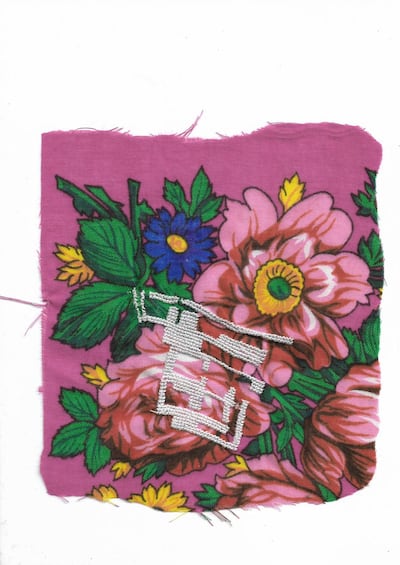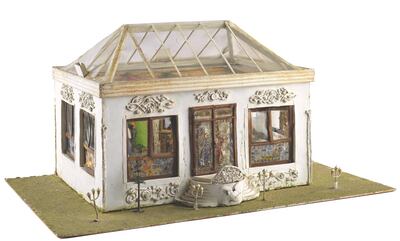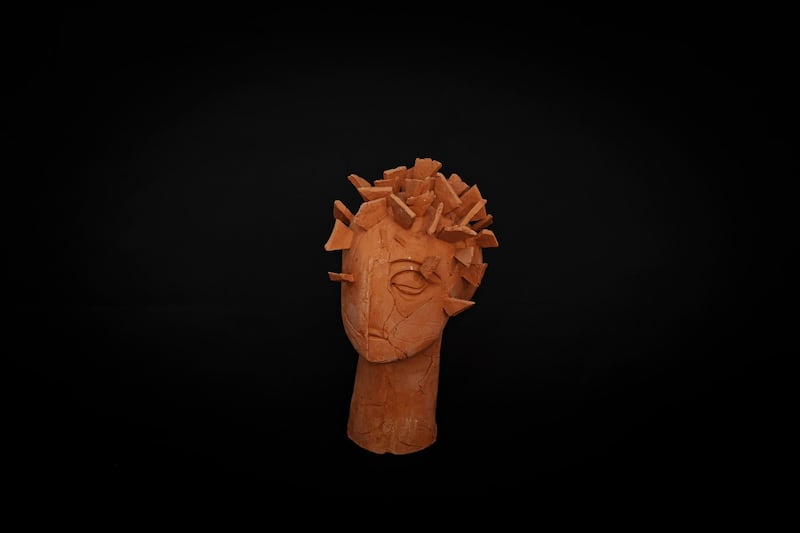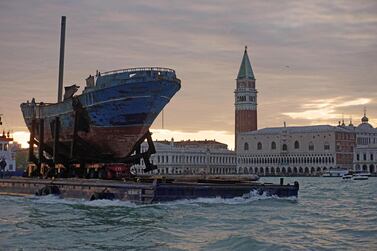Iraqi-Lebanese writer Tamara Chalabi is using this year's Venice Biennale to help introduce her new project, Ruya Maps.
Chalabi, a historian with a PhD from Harvard University who co-founded the Ruya Foundation in Baghdad in 2012, has installed the second show by roving platform Ruya Maps at the art event. The group exhibition, Heartbreak, sits next to the Iraqi National Pavilion, which is displaying a painting and sculpture show by veteran artist Serwan Baran, commissioned by the Ruya Foundation.
Where the foundation focuses on supporting Iraqi artists, Ruya Maps gives opportunities to creatives from conflict regions to show internationally, emphasising the continuities among artists from post-conflict areas rather than their national or geographic differences.
“The Ruya Foundation is very much focused on Iraq and bringing Iraqi artists to the world and vice versa,” Chalabi explains. “In a country that has been war-torn for so many years, a cultural isolation has developed that has prevented the arts – which has always been a very prominent part of Iraq’s modern identity – from really being communicated in any way that is accessible internationally.
"The challenges we have faced as a foundation are tremendous, and one of the most pertinent for me is the question of access," she continues. "And what this has suggested to me over time is that the challenges faced by Iraqi artists are not unique to them."
Problems that Ruya has faced, such as the lack of a permanent source of funding, “are something you sense across a lot of different regions of the world that have any kind of social or political instability or have recently come out of that fragile environment”.
A focus on heartbreak
Heartbreak is Ruya Maps's second show, following an exhibition of Venezuelan artist Pepe Lopez in London last year. Put together by Chalabi and Italian curator Paolo Colombo, the exhibition takes as its theme two tragic love stories of Dido and Aeneas – in which the Trojan prince Aeneas, following his duty, leaves Dido, who kills herself – and Layla and Majnun, a Persian tale of madness and forbidden love from the 12th century. The classical touchstones here signal the exhibition's desire to see war through a prism of emotions and intimacy.
Palestinian artist Majd Abdel Hamid memorialised the infamous Tadmur Prison in Palmyra through embroidering the floor plans of its layout, using the archetypal Palestinian folk art form as a means, he says, "to slow down time. So many things are happening so fast now – I wanted to decelerate things in order to remember them."
The show includes the mesmerising, idiosyncratic work of Turkish artist Fusun Onur, who re-creates scenes from her childhood in carefully detailed maquettes: the kitchen table with plates and kettle, the house with stucco detailing over the windows and door. Memory here comes interlaced with the stifling feeling of keeping something too close. Greek artist Christiana Soulou hews more directly to the theme of Dido and Aeneas: she exhibits a 17th-century painting by a Venetian artist of Dido's suicide after Aeneas returns to Troy. The colourful, theatrical painting is flanked by her delicate sketches of the background figures in the scene, as if they proliferated and ran away from their supporting roles in the tragedy.

Plans for the future
"Ruya Maps is focused on discussing, promoting and working with themes that are more horizontal, more lateral, than vertical, more thematic shows that deal with issues that are very relevant today," says Chalabi, adding that the platform will grow in scope. "It aims to communicate these themes and eventually develop an education programme around them that's accessible online and is able to engage with local audiences. Ideally – and it's also related to funding – we'd like to have our own space, where we're able to operate a more permanent exhibition series."

Because of the diasporic nature of the Arab region and other conflict areas, foundations interested in supporting artwork from them need to be as focused in the areas as beyond them, where much of their population resides. Indeed, though a small exhibition, Heartbreak sketches a sense of the timelessness of conflict, from the Trojan wars – an earlier iteration of the now ubiquitous theme of the Mediterranean crossing – to the Lebanese Civil War, as seen here in Imad Issa's videos and sculptures, to the current conflicts in the region.
"Syria changed the world," says Hamid, who lives in Jordan but was born in Syria. "It's the new Spanish Civil War." History repeats itself, time and again.
The Venice Biennale runs until November 24







